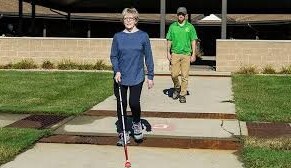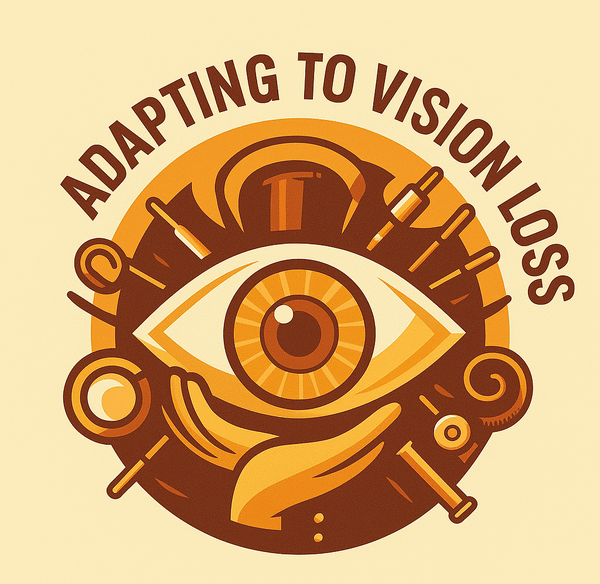
For individuals who are visually impaired, developing skills to navigate the world confidently and independently is a transformative journey. Orientation and Mobility (O&M) training is a cornerstone of this journey, equipping people with the tools, techniques, and confidence to move safely in both familiar and unfamiliar environments. This beginner’s guide will introduce you to the fundamentals of O&M, its benefits, and how to get started.
What Is Orientation and Mobility?
Orientation refers to understanding where you are in space and how to get to your desired location. Mobility is the physical act of moving from one place to another. Together, O&M involves strategies and tools that enable individuals with visual impairments to navigate their surroundings safely and efficiently.
The process encompasses a wide range of skills, from basic orientation in a single room to navigating complex urban environments. It is tailored to the individual’s needs, lifestyle, and degree of vision loss.
Why Is O&M Training Important?
- Independence: Learning to move confidently reduces reliance on others and fosters self-reliance.
- Safety: O&M techniques help individuals avoid obstacles, cross streets safely, and handle unexpected situations.
- Confidence: Mastering these skills builds self-esteem and encourages participation in work, social, and recreational activities.
O&M isn’t just about mobility—it’s about reclaiming independence and improving the quality of life.
Tools and Techniques in O&M Training
1. The White Cane
The white cane is a vital mobility tool that serves multiple functions:
- Obstacle Detection: The cane’s sweeping motion helps identify objects in your path.
- Feedback: It provides tactile information about the terrain (e.g., uneven surfaces, curbs, or stairs).
- Symbolism: It signals to others that the user is visually impaired, often prompting assistance or caution.
2. Human Guide Technique
Sometimes, a trusted companion can assist in mobility. In this technique, the visually impaired person lightly holds the guide’s elbow and follows their movements. This is particularly helpful in crowded or unfamiliar areas.
3. Sound and Echolocation
Sound cues, such as traffic noise, footsteps, or even echoes, can help determine distance, direction, and the size of a space. O&M training often includes exercises to develop these auditory skills.
4. Tactile and Environmental Cues
Relying on tactile feedback, such as feeling textures underfoot or identifying landmarks like fences or walls, can help in orientation. Changes in temperature or wind direction may also provide subtle environmental cues.
Steps to Begin O&M Training
1. Assessing Your Needs
The first step is to connect with an O&M specialist, who will assess your vision level, mobility skills, and personal goals. The specialist will design a customized training plan suited to your lifestyle.
2. Starting Indoors
Training often begins in a controlled environment, like your home or a classroom. Here, you’ll learn basic orientation, such as locating furniture, identifying doorways, and understanding room layouts.
3. Progressing to Familiar Outdoor Areas
Once basic skills are mastered, training shifts to familiar outdoor areas, such as your neighborhood. Here, you’ll practice navigating sidewalks, crossing streets, and using landmarks.
4. Mastering Complex Environments
Advanced training involves navigating busier areas, such as city centers, shopping malls, or public transportation hubs. Techniques like crossing multi-lane streets, using tactile paving, and interpreting auditory traffic signals are taught at this stage.
Overcoming Common Challenges
1. Fear of Getting Lost
Getting lost is a natural concern for beginners, but it’s also an opportunity to apply problem-solving skills. Using landmarks, retracing steps, or asking for assistance are effective strategies.
2. Adjusting to the Cane
Some people may feel self-conscious or awkward using a white cane initially. It’s important to view the cane as a tool of empowerment rather than a symbol of limitation.
3. Navigating Public Spaces
Crowded areas can be overwhelming, but with practice, techniques like echolocation and maintaining personal space become second nature.
Incorporating Technology into O&M
Technology can complement traditional O&M skills and enhance independence:
- Navigation Apps: Tools like Google Maps and BlindSquare, provide audio-based directions tailored to visually impaired users.
- Wearable Devices: Esight smart glasses, GPS-enabled wristbands and smart watches can offer real-time guidance and obstacle detection.
- Be My Eyes: This app connects users with sighted volunteers who can provide visual information in real-time.
Tips for Successful O&M Training
- Set Realistic Goals: Start with small, achievable objectives and build on your progress.
- Practice Regularly: Like any skill, consistent practice is essential for improvement.
- Stay Open-Minded: Be willing to try new techniques and tools to find what works best for you.
- Seek Support: Connect with local or online communities for encouragement and advice.
Resources for O&M Training
- Local Organizations: Contact agencies like the National Federation of the Blind (NFB) or the American Council of the Blind (ACB) for resources and referrals.
- Rehabilitation Centers: The National Eye Institute and the US Dept. of Veterans Affairs are some examples of where these services are available. Many vision rehabilitation centers offer O&M programs tailored to individual needs.
- Certified O&M Specialists: Look for certified professionals who can provide personalized training.
Conclusion
Orientation and Mobility training is a powerful tool for anyone navigating life with a visual impairment. It’s not just about learning to move safely; it’s about building confidence, independence, and a sense of freedom. By embracing these skills and tools, you’ll unlock new possibilities and take charge of your journey.
Whether you’re just beginning or looking to enhance your existing skills, O&M training is a lifelong investment in your independence and well-being. Take that first step today—it’s the start of a brighter, more empowered future.
